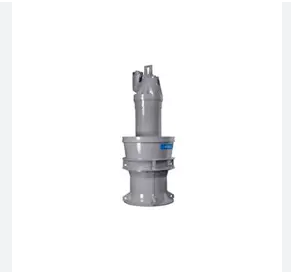Submersible pumps, often overlooked, are vital components in various industries and everyday life. These powerful devices, designed to work while submerged in liquid, offer unparalleled efficiency and versatility.
What are Submersible Pumps?
Submersible pumps are specialised pumps that operate underwater. They are completely sealed, with their motors closely coupled to the pump body. This unique design allows them to push fluids to the surface, unlike other pumps that have to pull fluids up, making them more efficient.
How Do They Work?
These pumps operate under a simple principle. When submerged, the pump’s motor drives an impeller, a device that moves fluid by rotation. This action creates a vacuum, drawing fluid into the pump, which is then pushed to the surface through a pipe or hose.
Applications of Submersible Pumps
Submersible pumps have a wide range of applications. They are used in:
- Water Wells: They are commonly used to pump groundwater to the surface for drinking water, irrigation, and other purposes.
- Oil Industries: Submersible pumps play a critical role in the oil industry, helping to extract crude oil from underground reservoirs.
- Sewage Systems: These pumps are employed in wastewater treatment plants to move sewage to treatment facilities.
- Floodwater Drainage: They are used for draining flooded areas, such as basements, construction sites, and flooded urban areas.
- Industrial Processes: Many industries use these pumps for various processes, such as cooling water for power plants, and moving chemicals or other liquids.
Advantages of Submersible Pumps
- Efficiency: They are more efficient than traditional pumps as they push, rather than pull, water to the surface.
- Space-Saving Design: Their compact design makes them ideal for places where space is limited.
- Low Maintenance: Being submerged in the fluid they are pumping, these pumps are less prone to cavitation, a common problem in other types of pumps.
- Silent Operation: They operate quietly as they are submerged, making them suitable for residential areas.
- Durability: These pumps are highly durable and can operate in harsh environments.
Types of Submersible Pumps
Submersible pumps come in various types, each designed for specific applications. The most common types include:
- Bladder Pumps: Used for groundwater sampling and monitoring.
- Grinder Pumps: Used in sewage systems to grind waste into a fine slurry.
- Well Pumps: Used to extract water from wells.
- Utility Pumps: Ideal for general water transfer applications.
Challenges and Solutions
While submersible pumps are efficient, they face challenges like wear and tear due to prolonged submersion and clogging. Regular maintenance and choosing the right type of pump for specific fluids can mitigate these issues.
The Future of Submersible Pumps
Technological advancements continue to enhance the capabilities of submersible pumps. Innovations like remote monitoring and energy-efficient designs are making these pumps more reliable and sustainable.
Summing up, submersible pumps are the unsung heroes in many sectors, offering incredible power and efficiency. Their importance cannot be overstated, as they play a crucial role in water supply, waste management, and various industrial processes. As technology advances, their applications and efficiency are bound to increase, making them even more indispensable in the future.
